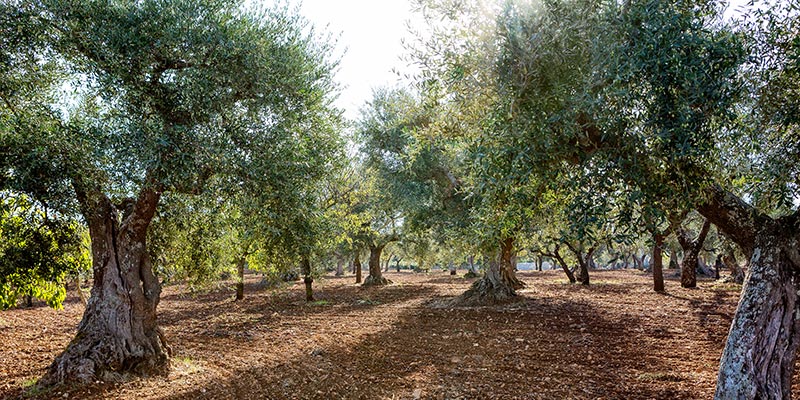Where does this need arise?
In the recent years, more and more growers have understood the importance of autumn fertilization in their orchard, vineyard or olive grove.
Where does this need arise? In fact, it has been demonstrated, through scientific analysis and research, that the vegetative growth of the plant does not stop at the time of harvest, but continues till when temperature reaches about 10 ° C and below, to enter that phase called winter dormancy.
So, till this point, in fact, the plant continues to vegetate, and indeed it is in this period that it accumulates more nutrients to be used later on in the following spring during the vegetative regrowth phase.
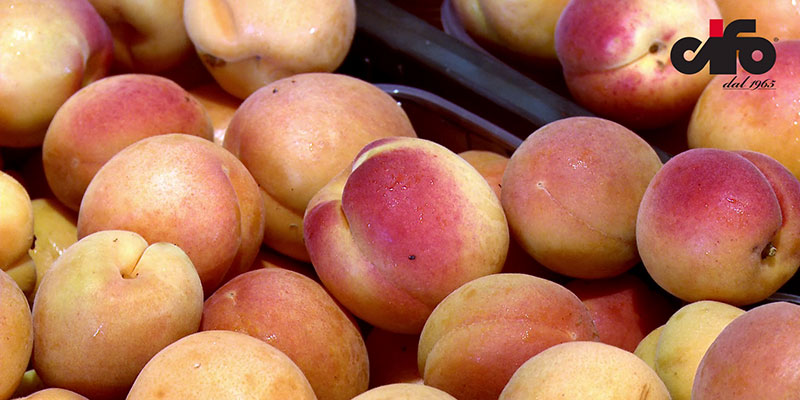
More precisely, up to the end of complete leaf fall (until the end of October for the fruit trees and November for the vine) the plant through an intense radical activity absorbs nutrients which along with photosynthetic products will be translocated to the buds and branches and are reserved for the next season.
To ensure good fruiting in the following year, the accumulation of processed substances (sugars and amino acids in the first place), and of microelements within the buds, is very important to guarantee a good fertilization and fruit setting.
Another essential element to be supplied during autumn fertilization is Nitrogen, as it has been discovered that from the vegetative restart to flowering the absorption of this element is modest and the development of buds and flowering consequently occur at the expense of the reserves accumulated in the woody parts and in the roots during autumn absorption.
It should be emphasized that the winter organic fertilization is not able to replace the autumn fertilization and the ideal period to carry it out is between September – October, using fast-acting fertilizers.
The results that can be obtained from the autumn fertilization, supported by multi-year trials, are the better vegetative-reproductive growth balance, an increase in the fertility of flowering buds, an increase in production and finally a decreased alternate bearing which is the key point to maintain high and constant profitability of the orchard.
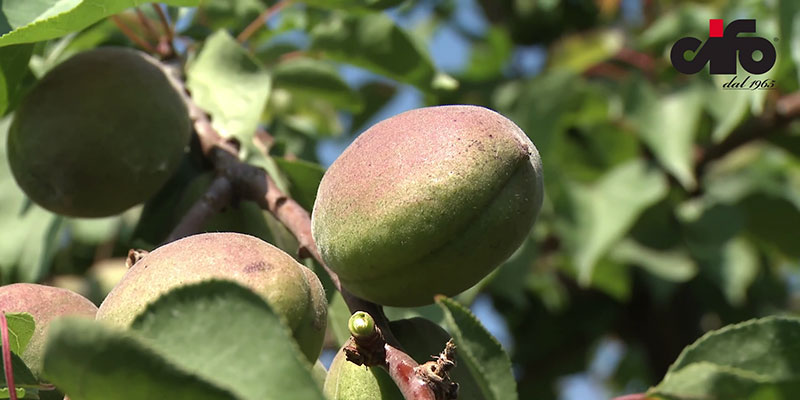
Another factor that should not be underestimated is the temperature: early autumn temperatures allowing good absorption (the important thing is not to drop below 10-12 ° C); the time of fertilization can also vary according to the crops: commonly by October for fruit trees and until November for the vine.
However, it is important not to mix up autumn fertilization with spring fertilization: the two fertilizations are complementary to each other, without one excluding the other; this must be taken into consideration in order to not exceed the fertilizing units envisaged by the annual fertilization plan.
Cifo, along with farmers and sustainable agriculture, always offers a variety of products in its portfolio to meet the different needs of different crops and climates.
Soil application
The most recommended products are Top N and Top NPK 7-5-14: both of these products are part of the Top Line, a line with the high nutritional efficiency and low environmental impact.
To produce the products of this line, the exclusive process FCH® (Full Controlled Hydrolysis) has been used which gives the possibility to have three fractions of organic nitrogen in these products with fast, medium and slow release which is one the reason behind their efficacy.
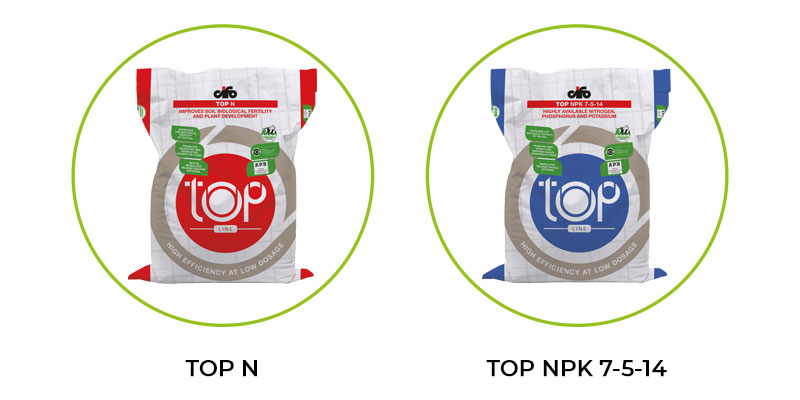
Besides, presence of APR® (Proteic Activator of Rhizosphere) stimulates the development of absorbent roots and improving the activity of beneficial rhizosphere microorganisms which ultimately leads to increased absorption and storage of nutrients by the plant.
All the products of the Top Line can also be used in organic farming in accordance with current legislation.
Foliar applications
Cifo recommends different products to have a proper solution for each type of particular need:
MACYS BC 28
Macys BC 28 is a biostimulant in accordance to Legislative Decree 75/2010, completely of vegetable origin, based on Macrocystis integrifolia, a brown algae typical of the western Canadian coasts.
The growing environment, the producing process and the nutritional properties of this algae make Macys BC 28 a product with unique characteristics on the market.
Thanks to its biologically active components, it positively influences the plant during physiological functions by improving cellular turgor, creating the conditions to withstand harsh winters.
MIKROM BZn
Mikrom BZn brings to crops Boron and Zinc, two essential microelements for the regular development of flowers and fruits, for protein and sugar metabolism, and for the strengthening of plant tissues.
The applications in the post-harvest are recommended to increase the resistance of the plant to low winter temperatures and to ensure having proper flowering and fertilization in the following spring.
In systems with soils where the plants have stunted growths with poorly developed branches, we recommend treatments by inserting a product that includes all the nutritional elements.
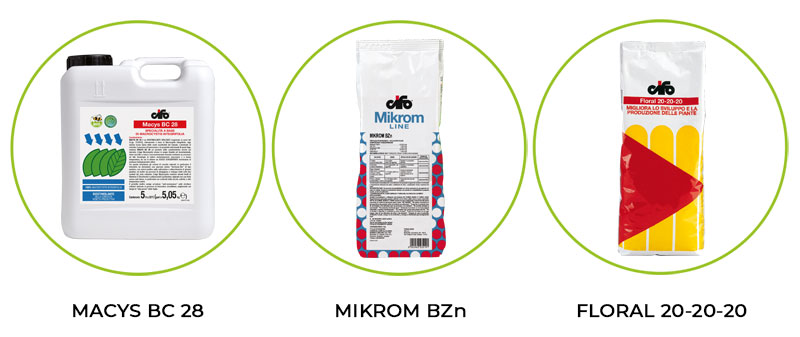
FLORAL 20-20-20
Floral 20-20-20, like all the formulations of the Floral Line, offers maximum efficacy in foliar application. Furthermore, the high purity of the nutritional elements contained, allows fast and complete solubilization.
Floral 20-20-20 allows the plant to be given the right amount of fundamental nutritional elements, including microelements, to restore the natural nutritional reserve and to better face the vegetative regrowth in the following spring.
We feed plants well before winter dormancy to make them work at their best at the vegetative restart.

